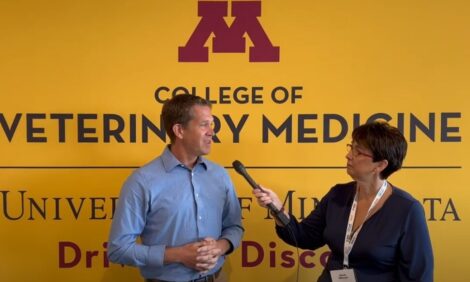



Scientific Assessment of the Welfare of Dry Sows Kept in Individual Accommodations
The authors of the latest CAST report into alternative sow housing systems warn that there is a danger of regulation moving ahead of the science. Jackie Linden draws together the main highlights of the report for ThePigSite.The Council for Agricultural Science and Technology (CAST) published Issue Paper 42, entitled Scientific Assessment of the Welfare of Dry Sows Kept in Individual Accommodations in March 2009. The 20-page report is the result of investigations by a group of researchers headed by Stanley E. Curtis of the University of Illinois and including Rodney B. Baker (Iowa State University, Ames), Mark J. Estienne (Virginia Tech Tidewater Agricultural Research and Extension Center), P. Brendan Lynch (Moorepark Research Centre, Ireland), John J. McGlone (Texas Tech University) and Bjarne K. Pedersen (Danish Farm Design A/S).
In their introduction, the authors explain that how the dry sow should be accommodated in commercial pork production has become an important public issue on a global scale. The various stakeholders in the issue and its resolution in the United States (and elsewhere) hold different viewpoints. This, and the fact that the animals' feeling cannot be directly measured, make it difficult to come to a clear decision on a single practical and sustainable process of providing pork for human consumption.
They continue that in determining whether or not the welfare of sows is compromised, individuals and lawmakers may act emotively and without factual scientific information. And here lay the major difficulty for the CAST group: insufficient statistically adequate, scientifically controlled trials on industry farms have been conducted, and many reports are not useful for critical evaluation, let alone for developing public policy.
The authors examined the data available, however, in a number of relevant areas. As an introduction, they examined the nature of the sow and how the modern animal is larger, leaner and generally less aggressive than her ancestors. They note, however that, "Social behaviours in sows are instinctive and most have survived the heavy genetic selection pressure that has been applied to various commercially important traits throughout the twentieth century".
* "Recent reviews indicate that the welfare of dry sows can be equivalent in IGAs and group pens." |
Following a brief review of the history of sow housing the the US, the CAST report move on to its main topic, evaluating individual gestation accommodation (IGA) with alternative sow accommodation, primarily in groups. The assessment was considered from the point of view of pig behaviour, nutrition and feeding, reproduction, health, manure management, worker safety and system design.
The report's authors reiterate their concern about the lack of scientific data but come to the cautious conclusion that "Recent reviews indicate that the welfare of dry sows can be equivalent in IGAs and group pens".
The authors indicate that more large-scale, on-farm, multidisciplinary, scientifically robust research and development is needed before rigid regulations – which would increase production costs but not necessarily sow welfare – should be imposed.
In looking to the future, the CAST group said it is difficult to predict the future design and operation of pregnant sow housing. They explained that while until the past decade, cost of production was the primary driving force behind development of pork production systems, societal views are directly impacting commercial pork production today in systems in the EU and parts of the United States.
They offer two scientific views of the current situation. Many scientific evaluations, they explain, have concluded that the state of being of the pregnant sow is equivalent whether sows are kept in IGAs or in group pens. As a result, a range of different strategies have emerged. On the one hand, if sow welfare is similar and IGA systems are less expensive, these could be refined to improve the welfare of sows kept individually. On the other hand, they assert, because certain consumer/activist views favour group pens, these should be scientifically refined to improve the welfare of sows kept in groups.
"One could logically adopt either view," concludes the CAST report. "Until that choice is settled on and accepted by a large majority of people in the United States, the nature of accommodations for pregnant sows will remain a public issue."
They warn, "As that choice is being made, however, it must be borne in mind that although the choice will range from relatively trivial to virtually non-existent with respect to its overall effect on the pregnant sow's state of being, it will be of substantial consequence with respect to sow and piglet health, the cost of pork production and the availability and price of pork products.
"In any case, the choice should be made with sound science being given due consideration. Moreover, once that decision has been reached, further scientific research and development should be applied to the dry sow accommodation system that has been adopted."
Further Reading
| - | You can view the full report by clicking here. |
April 2009








